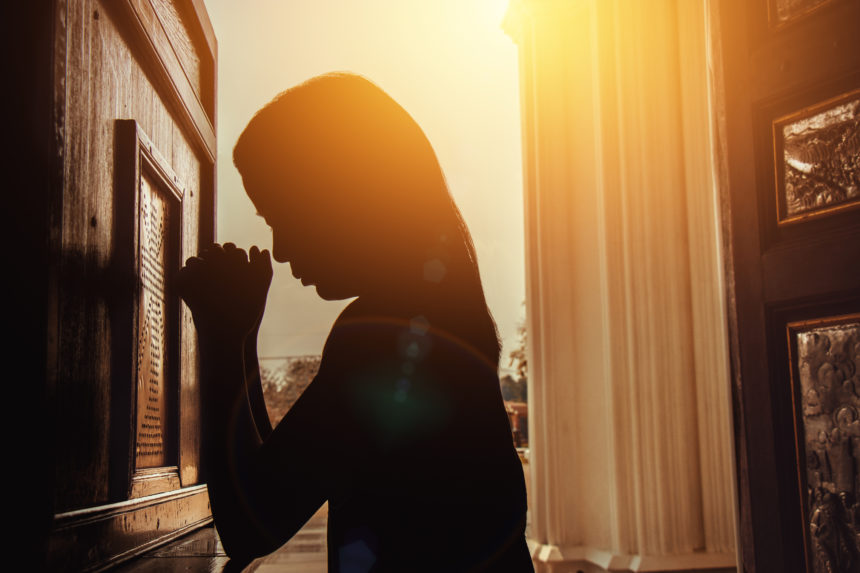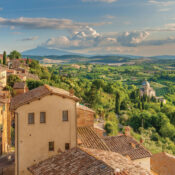For the first time since college, I won’t be attending Mass today, Sunday, August 19. Not because of illness or travel, or another legitimate exception, but as in my college years, out of willfulness. I need the time for a different type of reflection. For a bona fide mea culpa.
During the past few days I have read through the accounts of the Pennsylvania priests’ scandal and experienced emotions from sympathy to outrage. But the most considered and matured of these feelings is one of shame. Walking the streets of my West Village my head is lowered, my eyes cast to the ground, almost unconsciously.
I have let you down. You in the pew next to me, you in the back of the church, you on its steps. You, of another faith, or no faith at all, who respected me for mine. But especially and particularly those preyed upon by so very many deviant clergymen.
My respect for honest and good priests, my love of my faith and the sacraments, my enchantment with the mystical rites and rituals clouded my thinking and inhibited my actions. In 2002, while living in London and hearing of the allegations against the U.S. Catholic Church, I should have listened more carefully, questioned more deeply. The defensive posture of “this behavior is endemic to every profession where adults deal with children — sports teams, schools, homes for the disabled,” should have crossed my mind and then been crossed out of my reasoning just as quickly. These actions by holy men, by ambassadors of Christ, were not the equivalent.
And in 2006, when the Boston Globe exposed the evils perpetrated upon hundreds (thousands?) of innocents, my role wasn’t to pray for those injured, but to protest, to rail against the system that had facilitated crimes by transferring priests from parish to parish, that allowed said men to retire in comfort and whatever kind of peace one so twisted can experience.
My job, as a Catholic, as someone who loved my religion and gave thanks for the gift of a faith I felt a kinship with, my job was to join in demonstrations as I would against gun violence and the mistreatment of immigrants, to understand why you, the victims of unspeakable betrayal and acts, chose to leave the faith, could not stomach the sight of a priest, could never again walk into a Catholic Church. My job, no my duty, sacred or not, as a human being, as a practicing Catholic, was to advocate for reform and to open my arms in compassion. Because, you see, my second faith is journalism. Because the twins that make up me, my belief in the Trinity and my allegiance to telling, even exposing, the truth, should have propelled me into a frenzy of action.
As a product of devout parents and Catholic grade and high schools, I knew — and know — some of you, both priests and people. In class, I sat alongside some of those who have suffered. It was only by the grace of God — was it by the grace of God? is that always my default? — that I escaped abuse, too.
As a Catholic, and I say this neither glibly nor ironically, I am heartily sorry, and I will amend my life. Amen.
Growing Up Catholic
St. Peter’s Cathedral in Scranton, St. Lucy’s, St. Ann’s, to me, were a place of stories. Glazed into the stained-glass window, an angel appearing to a young woman. Painted on the ceiling, a gentle Jesus speaking to crowds. Sculpted into the pillars and altars, the heads of eagles and lions. History plastered into the nearly life-size statues of saints, many of whom, Jude included, stood with the instrument used to martyr them. Saint Ann with the small girl Mary at her knee, Saint Theresa with her wreath of roses. Brave men and women. Both. Stories were pieced into the mosaics of the floor medallions, forged into the iron cross.
Stories that all could understand — those without the privilege of having learned how to read, those from foreign countries, even little children. A purposeful, inclusive visual feast, everywhere one turned. How could an imaginative kid not love it?
My devout mother began bringing me to Mass at age three. Four of my five senses became engaged, my eyes studying the art and celestial light streaming through the panes, the smell of melting wax, the biting incense, polished wood, the hardness of the kneelers and the smooth curve of the pew seats against my legs. The marvel and grace of the human voice chanting, the vibrations of the organ, the rhythm of Latin prayers. And the promise of my fifth sense, taste, to be satisfied by not a mere wafer but a living food, Holy Communion, that would transform me inside and out, to be received when I reached the age of reason, seven.
The brass rail that separated priest from people was beautiful, but the priest himself held little appeal for me, despite his costume and the magic he could perform with bread and wine. Even as I grew to school age I found the celebrant an austere, droning, unapproachable figure that failed to capture my interest. This was probably rooted in the feelings of disdain I already felt for those who were better dressed, better fed, with better houses, elevated from both the modestly clad congregation and a contrast to the figures on the windows and walls.
In grade school the appeal of the church changed. St. Clare’s, up the street from the grade school, was more function that frills. The day began with Mass. There was so much order — boys on St. Joseph’s side, girls on the Blessed Mother’s, the three parts of the Mass. Stand, sit, kneel. File out in silence. For me, this provided a respite from a home filled with seven children age eight and under, with two yet to be born. A contrast to the smell of sulphur from the burning culm dumps (the waste of coal afire). A sensation of being close to heaven and the promise of the reward awaiting us. (A reward filled with dogs, I prayed.)
And while I was still in grade school, Vatican II offered reforms that caught my attention. It broke down the barrier of a dead language, replacing it with living breathing words. Priests began facing the congregations. Parishes installed a table center stage that seemed to welcome everyone in the pews. The Father left the pulpit and preached in the center aisle. The sacrament of Communion was now dispensed into one’s hand. Homemade banners proclaimed God is Love, and each Sunday featured a folk mass with guitars and hymns reminiscent of Peter, Paul, and Mary songs.
By my high school days, dogma and dictates gave way to social action, and the faith provided a contemporary narrative. The stories of the poor, the forgotten, the oppressed. Students worked alongside priests in migrant camps, in the projects, at soup kitchens, on suicide hotlines. Sisters, but also priests, taught us, many of these men recently ordained, friendly and relatable. (In those days, it seemed as if the musicals Godspell and Hair had collided creating a rock concert of good news). The Church, like we students, was experiencing a kind of adolescence, a rebellion. Priests played the album Jesus Christ Superstar in religion class to teach us about our Lord’s humanity. Assignments included attending services at Protestant churches and synagogues to learn about our common bonds with other faiths. In a psych class, no topic was forbidden — from the gospel’s adulterous woman to masturbation. Were some of these Fathers too chummy, humming through the halls, ferrying athletes to games, boogying at dances? Yes. Did I understand the consequences or that a few might be using this freedom as a cover for their own perverted purposes? No. The good guys were inspiring, the bad, no, the evil ones, artful. Vatican II was not the impetus for this sick behavior: Predator priests had existed nearly as long as the Institution itself, unbeknownst to most of the laity due to the machinations of those in authority.
Decades later, the actions of some priests in those years — the late 60s and 70s — would be characterized as merely “misguided” or “inappropriate.” But what grown men excused as inappropriate caused, at the very least, a faith-shaking effect, and at the very worst, irreparable damage, to adolescents.
“When I was a child, I spake as child, I understood as a child, I thought as a child: but when I became an adult I put away childish things. For now we see through a glass, darkly. But then face to face…”
This week, walking through a Manhattan church, I imagine the priests’ victims, their testimonies, their sorrows as powerful as any artwork. Perhaps some outward sign of repentance, a window, a statue, a carving should be set in every Catholic church to remind us of the thousands of suffering Christs who found not peace, but hell under these roofs. A Catholic church is still a place of stories.
Catholic?
In line for communion, a 6’4″ drag queen clad in evening gown and teetering heels, her makeup flawless, nails, French-manicured; an 80-year-old Bubbe wearing one of her two thin housefrocks; and a 30-something professional woman, an editor, in a mint green, well-tailored dress from France, high strappy sandals. Sounds like a set-up for a joke, right? After Mass, the queen and professional retreat to the statue of St. Jude, patron of lost causes, the former taking the kneeler, the latter a respectful distance behind. They know each other solely through this weekday ritual, but even so they clasp hands as the taller of the two takes her leave. Within minutes, the priest approaches the editor.
“Do you need to talk? Is there something I can help with?” he asks, face furrowed with concern.
I believe he has me (the editrix) pegged for either an addict or a murderer. Introducing myself, I answer no, I must get back to work. At 6 p.m., I still have three or four hours to put in.
“But you are here almost every day. And you’re the only young person here,” he prods, and I say daily Mass is how I keep my job.
If a priest finds my fidelity perplexing, is it a wonder that many in the business world find the ritual incongruous? How could an educated, ambitious, seemingly accomplished woman (let alone one heading up a science and tech magazine in the ’80s) buy into a patriarchal, intolerant religion, one filled with fancies such as angels, a virgin birth, and the voodoo of bread and wine transformed into a Christ’s flesh and blood?
In Scranton, being Catholic was the norm. Since college, hewing to the faith has been met with skepticism, even mockery. For my atheist, science-educated friends, my practicing Catholicism was almost the same as giving credence to alien abductions (and there are commonalities: think apparitions and weeping statues). Those attempting to rationalize my unshakeable faith drew these conclusions: a) I am brain-washed since birth, b) I’m not very intelligent. They both amount to the same thing.
Adding to their confusion is the fact that I fashioned my own brand of Catholicism (as so many Catholics do) ignoring the Church’s rulings on birth control, premarital sex, and homosexuality. My brand used Jesus as the excuse for suspending judgment, adding that if Christ lived today, the rules would reflect the times. While I didn’t evangelize, nor did I ever hide my love for my faith. Did this cost me? Yes.
I had to prove myself over and over for this perceived weakness. But no place did it cost me more than in romance. Several men, early on, found my being an active Catholic a deal-breaker (lapsed would have been ok); a few, out of curiosity and the belief they’d exorcise my belief stayed longer; two fiancés, after years together and knowing my stance on a Catholic marriage and the promise of raising children Catholic, could not go through with a Catholic ceremony. (Ironically, when I was finally married it was by a Justice of the Peace, the process of annulling my Jewish husband’s previous union having taken more than a year — painfully procured so we could eventually have a Church wedding.)
This is a long way of saying that being Catholic in New York, in publishing, was never easy. And not for a second since returning to Mother Church after a brief hiatus which had me investigating Judaism and Buddhism, have I viewed Catholicism as the only song God hears; it was merely the instrument I best knew how to play. The grace of the sacraments, the routine of the Mass, the consolation of the rosary got me through very bad times. As is often the case, I got more than I gave.
My life would have been altered, if not ended, had I not been able to lean on, and into, my faith. But now I’m mindful of all those robbed of that consolation, that peace, those who at a young age had so much ripped from them, including their sense of self. Even with the Church’s 2002 adoption of zero tolerance for “credibly alleged predators” strictly enforced, how can I continue my habit of having it my way? Ignoring what I disdain, embracing what I like?
Are we who are living through the Church’s darkest hours (of course the Crusades and Inquisition were no picnic, either) complicit if we resume our routines? How does one continue to love one’s faith when those who administer the sacraments, who preach the word of Christ, belong to a group of men who committed crimes, or allowed them to continue?
And what about the good priests, the ones faithful to their vows, those who joined the clergy after the Boston scandal broke? Of the crimes cited in the Pennsylvania report, 93 percent occurred before 2002. Should I muster compassion for the good ones who stayed — or joined?
When I taught, students asked me what the best jobs were. To me, there were only two jobs worth holding. One was to be a doctor: what a miracle to be able to ease, even cure, an ailing body. And the second was to be a journalist. Because journalists exposed the truth. And by telling the truth, you could begin to heal an ailing world.
I think back to the three different women at Blessed Sacrament Church those weekdays, united by a love for something more important and ever-lasting than our small selves. I think about all those from my brother’s church who cared for me when I was bed-ridden for two years with little hope of recovery. And all the others of every denomination (or none at all) who helped me move, get to and from hospitals and tedious treatments, who refused to let me fade away.
The truth is that should I return, it will be for the people. All the people. And every day holding the victims in my heart.
Copyright ©2018 Patrice Adcroft. All rights reserved.
Become a Saturday Evening Post member and enjoy unlimited access. Subscribe now



